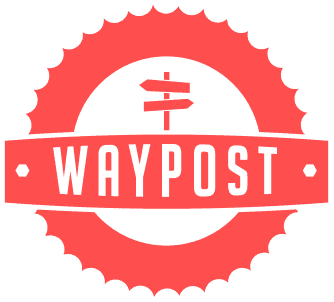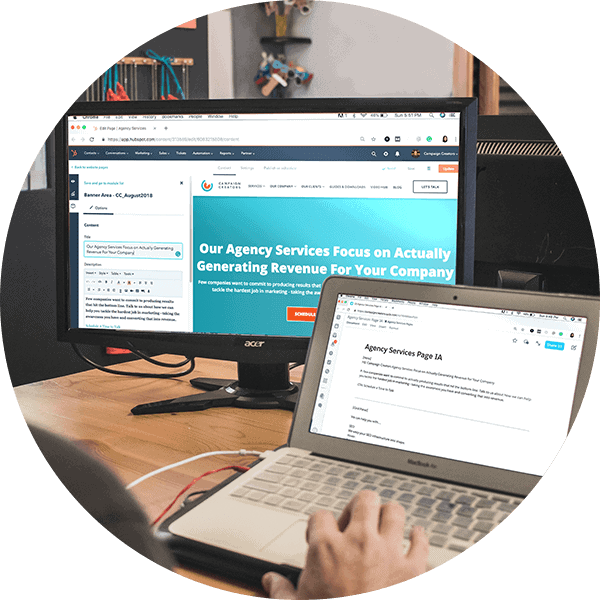
Debating A HubSpot Plan? Consider HubSpot Enterprise
November 9, 2023
Overcoming 5 Salesforce Implementation Challenges with HubSpot Fixes
November 10, 2023Costco and Sam’s Club are two prominent retail giants in the warehouse club industry, both known for their massive stores, bulk offerings, and exclusive membership programs. While they both share similarities, their approaches differ.
But what does it have to do with your business’s sales and marketing initiatives?
Like retail giants Costco and Sam’s Club, HubSpot and Salesforce dominate their respective markets as leading CRM and marketing automation software. And just as these retail giants cater to different consumer preferences, HubSpot and Salesforce serve unique marketing, sales, and customer relationship management functions.
As consumers may choose between Costco or Sam’s Club, businesses often evaluate HubSpot vs Salesforce. Some even go through a Salesforce to HubSpot migration to overcome the challenges of Salesforce implementation. However, rather than treating it as an either/or decision, a third option exists—a HubSpot–Salesforce integration. This approach combines the marketing automation strengths of HubSpot with the CRM capabilities of Salesforce.
HubSpot Salesforce Integration: The Best of Both Worlds
Individually, Salesforce provides sophisticated and advanced sales functionalities, yet it falls short when it comes to marketing and customer service needs. To address these gaps and ensure comprehensive client-facing capabilities, HubSpot’s Hubs come into play. In most cases, businesses pursuing a HubSpot and Salesforce integration employ Salesforce as their core CRM solution while harnessing HubSpot for its robust marketing automation capabilities.
When the two systems work together, marketers can capitalize on Salesforce data to personalize and segment campaigns while tracking revenue from closed deals. Lead scoring, email marketing, landing pages, and more run through the aligned HubSpot workflows. Furthermore, as contacts automatically sync every 15 minutes, marketing and sales teams access shared, real-time, and up-to-date data without manual exporting or importing hurdles. This eliminates the concern of lost data or poor marketing data quality, and ensures all teams are on the same page, facilitating a cross-departmental harmonious coordination. Putting it differently, integrating HubSpot and Salesforce combines the best of both worlds.
By effectively integrating both platforms, businesses can leverage the strengths of each to achieve a more comprehensive and efficient approach to their operations, just as savvy shoppers might find that membership in both warehouse clubs offers a broader array of benefits and product options.
The Benefits of The HubSpot Salesforce Integration

Full Pipeline Visibility
The HubSpot and Salesforce integration provides a holistic view of prospect and customer interactions across marketing, sales, and service touchpoints. By merging “intelligence” from the two platforms, teams gain complete visibility into the entire customer journey rather than dealing with disjointed data in separate systems. This consolidated data source empowers enhanced segmentation, personalized communication, and a comprehensive grasp of the customer’s experience, ultimately resulting in more efficient and improved marketing efforts.
Tighter Sales and Marketing Alignment
Enhanced visibility throughout the entire pipeline empowers teams to achieve stronger alignment. That is to say, the integration of data and workflows between HubSpot and Salesforce streamlines internal communication and collaboration toward shared goals and metrics. For instance, marketers can nurture and qualify prospects based on buyer insights before handing off high-value leads to the sales team. Meanwhile, the sales team can leverage prospect behavior data to customize outreach and individualize interactions. This level of alignment optimizes lead handling and drives growth.
And don’t take our word for it. According to LXA, sales and marketing alignment is that much more profitable:
- Synergized sales and marketing teams can fuel marketing tactics, generating over 200% revenue growth.
- Companies with aligned departments can realize up to 38% in their sales win rates.
- Marketing and sales alignment contributes to a substantial 36% improvement in customer retention.
- Aligned businesses enjoy a 30% reduction in customer acquisition costs, and their customers exhibit a 20% increase in lifetime value.
- According to sales and marketing statistics, when both teams collaborate effectively, businesses experience a swift 27% acceleration in profit growth.
Enhanced Customer Experience » Higher Customer Spending
Let’s clarify where all these substantial increases come from. Above all, a better cross-departmental alignment (marketing, sales, customer service) enables establishing closer, more personalized customer relationships, fostering a seamless customer experience.
Practically speaking, through the centralized and synchronized customer data provided by the HubSpot and Salesforce integration, businesses can craft targeted marketing campaigns that resonate with customer preferences and behaviors. When customers feel they are treated like humans and not as walking wallets, they enjoy an improved customer experience that drives them to actually buy more. And again, don’t take our word for it. Data shows that a staggering 86% of buyers are willing to pay more for an exceptional customer experience.
Informed Decision Making through More Powerful Reporting
What’s the point of integrating HubSpot and Salesforce without being able to track and monitor the outcomes and KPIs?
Indeed, HubSpot and Salesforce integration enables harnessing each ecosystem’s robust analytics and reporting capabilities for assessing marketing performance. As data flows from both platforms, teams are empowered with impactful insights into both successes and areas requiring attention. This allows for informed decision-making on where to double down and where more work is needed. Overall, smarter business decisions can pave the way for better results and a better way to grow your business in line with your objectives.
Increased Operational Efficiency & Faster Deal Closing
Having both HubSpot and Salesforce at your fingertips, coupled with a thorough understanding of how to maximize their combined potential, you can significantly expedite the deal-closing process. The streamlined systems and cohesive team efforts aligned around shared processes and strategies ensure you can accomplish more, with less time and effort.
This synergy eliminates the need for time-consuming administrative burdens (e.g., briefings, updates, and manual data entry), enabling teams and technology to focus on their core tasks and functions.
The HubSpot Salesforce Integration in Practice
Salesforce is one of the best HubSpot integrations for B2B organizations looking to scale—it has repeatedly been ranked among the top 45 most popular apps on HubSpot Marketplace.
If you have already googled how to actually execute the HubSpot Salesforce integration and come across the out-of-the-box integration solution, don’t rush into it just yet. While it may seem straightforward at first glance, the actual implementation is much more complicated, and it requires proper planning, attention, and the involvement of key decision makers. To put it bluntly, this is not a 5-minute fix.
The HubSpot Salesforce integration involves three key phases:
Planning & Preparation:
- Assemble a cross-functional team with leadership from sales, marketing, and other key business units. Alignment between these groups is crucial to ensure that integration serves all needs.
- Find a trusted and reliable integration partner who has a clear methodology for connecting HubSpot and Salesforce.
- Define your challenges, goals, timelines, expected outcomes, and decision-making authority.
Setup & Launch:
- Audit and clean your database by categorizing data as essential, “nice-to-have”, or unnecessary.
- Review and define property fields for contacts, companies, and opportunities.
- Begin training users to shorten adoption time and mitigate productivity loss post-integration
Ongoing Optimization:
- Refine workflows and automation by analyzing performance metrics to identify and enhance areas needing improvement.
- Continuously monitor for process inefficiencies to maintain seamless integrated operations over time.
Proper preparation, methodical setup, and ongoing optimization are key to maximizing the value of your HubSpot and Salesforce integration. Aligning stakeholders early on will save time and money by ensuring an efficient deployment.
* Please note that the Salesforce integration is only available with the HubSpot Enterprise Professional levels. Read more on the different HubSpot subscription types.
Getting Started with HubSpot Salesforce Integration
For some organizations, running both HubSpot and Salesforce in tandem makes more sense than either-or. That way, they can still leverage Salesforce’s powerful CRM capabilities while at the same time boosting marketing efficiency with HubSpot’s all-in-one, user-friendly interface. The seamless integration helps fuel sales cycles, ensuring a more comprehensive and productive approach to business growth.
If that makes sense to you too, we are ready to help you start integrating HubSpot & Salesforce. Waypost Marketing is a HubSpot Solutions Partner agency in business for over 20 years. For technical support and strategic preparation for the HubSpot Salesforce integration, call us at (864) 288-6162 or contact us online. We’re ready to support you every step of the way.









